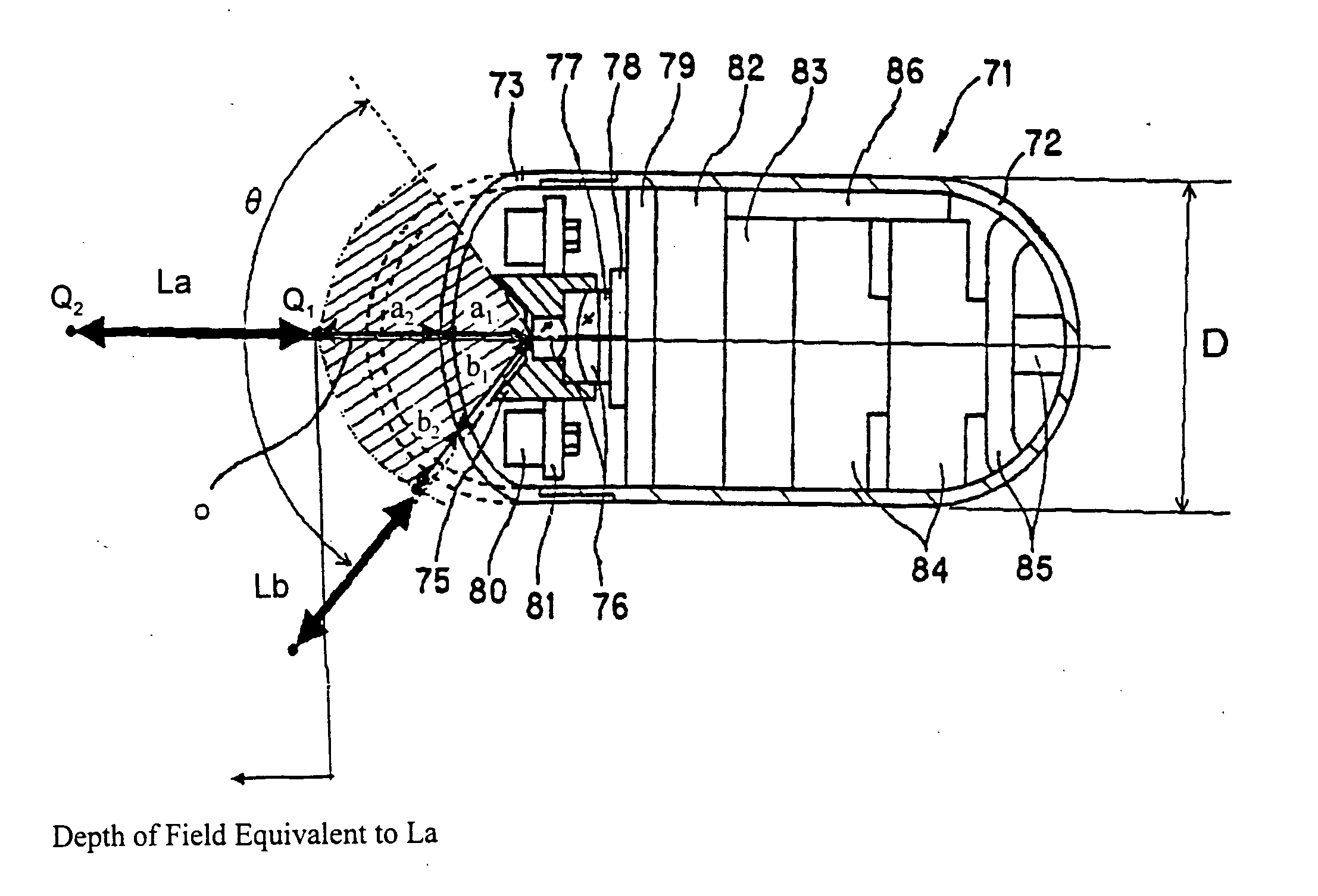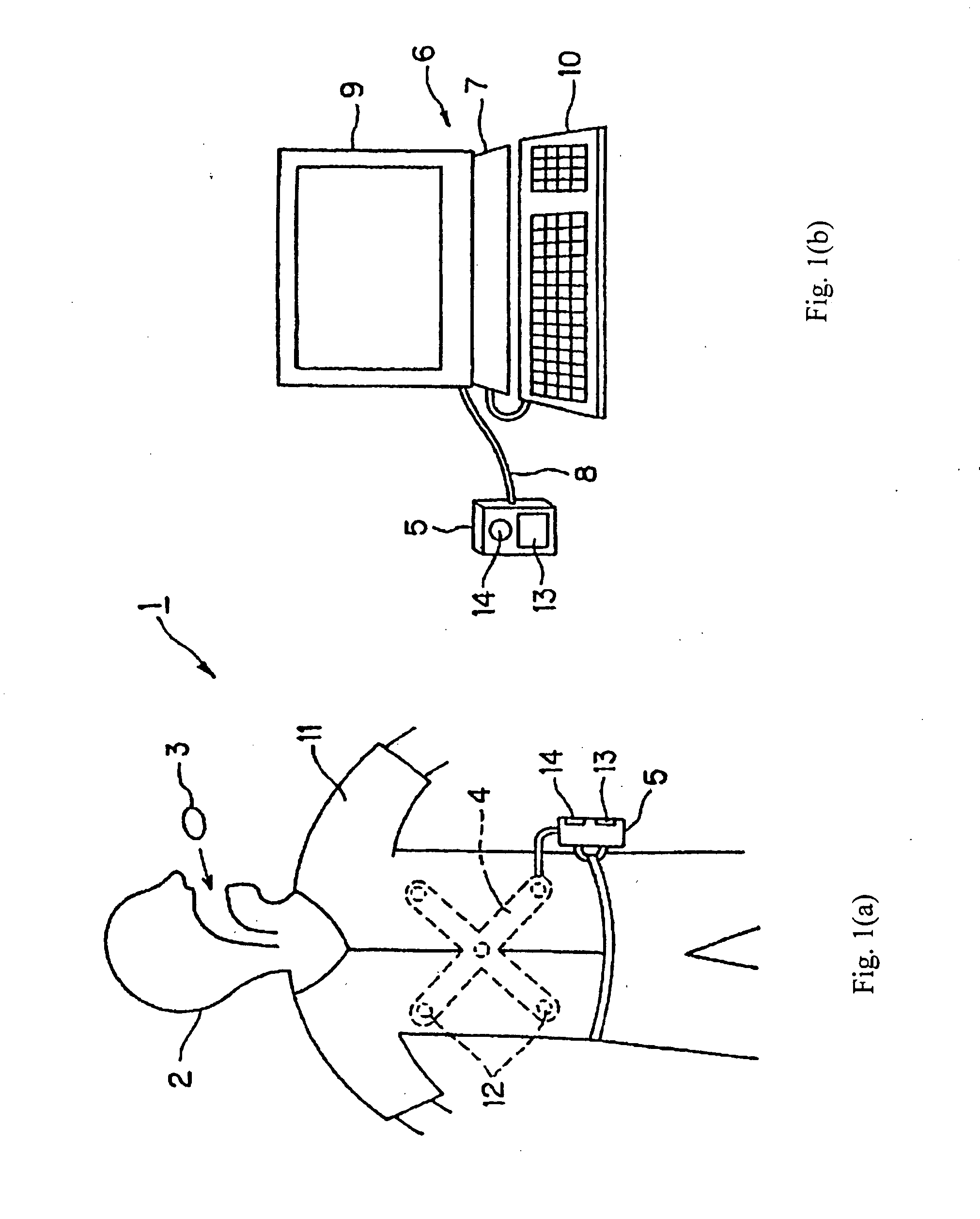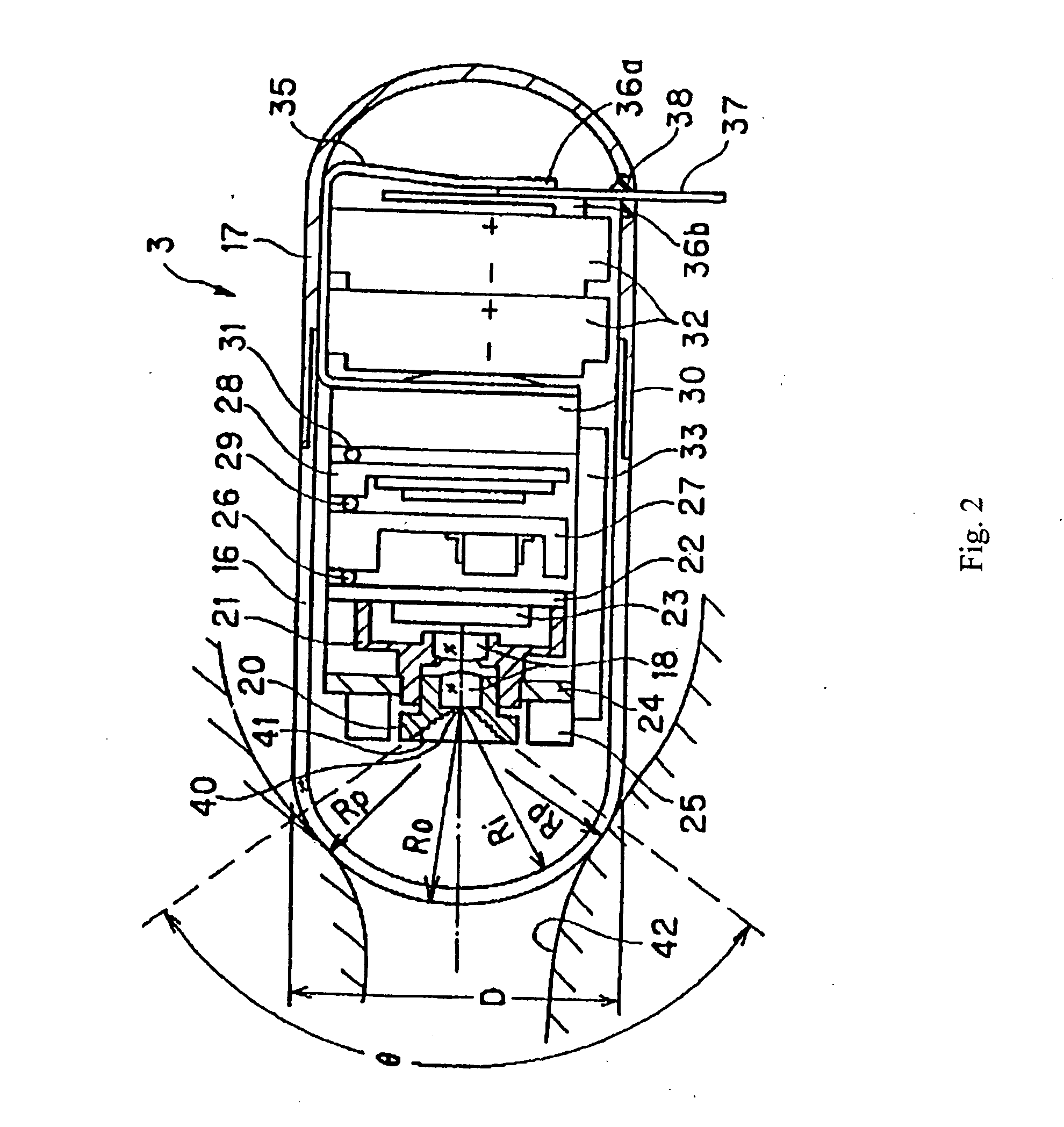Capsule endoscope
a capsule endoscope and endoscope technology, applied in the field of endoscopes, can solve the problems of large overall length of capsule endoscope, no disclosure of the performance of an objective optical system, and the mucosa of lumen organs is easily adhered to the central part of the transparent cover, so as to improve the ease of swallowing
- Summary
- Abstract
- Description
- Claims
- Application Information
AI Technical Summary
Benefits of technology
Problems solved by technology
Method used
Image
Examples
embodiment 1
FIGS. 1(a), 1(b) and 2 relate to Embodiment 1, with FIGS. 1(a) and 1(b) showing various components used to view images of internal portions of a body using a capsule endoscope, and with FIG. 2 showing the construction of a capsule endoscope according to the first embodiment.
As shown in FIG. 1(a), a capsule endoscope apparatus 1 includes a capsule endoscope 3 which transmits by radio signals optical image data of an internal wall of a body cavity passageway as it passes through the body cavity passageway after being swallowed by a patient 2, and an external unit 5 (i.e., that is positioned outside the body of the patient 2) that functions to receive the radio signals transmitted by the capsule endoscope 3. The radio signals are received using an antenna unit 4 that may be, for example, worn by the patient 2. The external unit 5 may contain a memory storage unit such as, for example, a compact flash (R) size memory unit having a 1 GB storage capacity. As shown in FIG. 1(b), image d...
embodiment 2
FIG. 3 shows a capsule endoscope 51 according to Embodiment 2. In the capsule endoscope 51, a rotationally symmetric, transparent cover 53 having a nearly hemispherical shape at its periphery is assembled to a portion of an outer capsule cover 52 which has a cylindrical shape. The rear end portion of the cylinder is occluded, and the front and rear portions of the capsule endoscope body are sealed so as to be water-tight, and enclose an objective optical system 54 as well as other components. The objective optical system 54 is formed by attaching a first lens and a second lens to a first lens frame 55 and a second lens frame 56, respectively. A CMOS image detecting element 58 is mounted within a recess in a substrate 57 at the image forming position of the objective optical system 54. Plural LEDs 61 that emit white light are attached to, and supported by, a substrate 60 that is fixed (by being glued, etc.) onto a cylindrical section of the second lens frame 56. The cylindrical secti...
embodiment 3
FIGS. 4(a)-6(b) relate to Embodiment 3 of the present invention. FIGS. 4(a) and 4(b) are cross-sectional views showing the internal construction of a capsule endoscope according to Embodiment 3, with FIG. 4(a) showing the entire capsule endoscope and FIG. 4(b) showing an expanded view of a portion of the capsule endoscope of Embodiment 3 near the transparent cover. FIGS. 5(a) and 5(b) are cross-sectional views of different objective optical systems that may be used with the present invention, and FIGS. 6(a) and 6(b) show the curvature of field (in mm) for the sagittal image surface S and the tangential image surface T, as well as the surface of ‘best focus’ of the objective optical systems shown in FIGS. 5(a) and 5(b), respectively.
In the capsule endoscope 71 shown in FIG. 4(a), a transparent cover 73 has a rotationally symmetric shape about an optical axis such that the radii of curvature (as shown in cross-section) near the periphery of the field of view are small compared to t...
PUM
 Login to View More
Login to View More Abstract
Description
Claims
Application Information
 Login to View More
Login to View More - R&D
- Intellectual Property
- Life Sciences
- Materials
- Tech Scout
- Unparalleled Data Quality
- Higher Quality Content
- 60% Fewer Hallucinations
Browse by: Latest US Patents, China's latest patents, Technical Efficacy Thesaurus, Application Domain, Technology Topic, Popular Technical Reports.
© 2025 PatSnap. All rights reserved.Legal|Privacy policy|Modern Slavery Act Transparency Statement|Sitemap|About US| Contact US: help@patsnap.com



